The Elmendorf Household Collection Third & Fourth Generations: 1814-1920
With no surviving male heirs, Solomon and Arriet Van Rensselaer's Cherry Hill descended to their daughter, Harriet Maria Van Rensselaer Elmendorf (1816-1897), after Solomon's death in 1852. The Elmendorfs lived at Cherry Hill from the 1850s through the 1880s. There, Harriet Maria's husband, Dr. Peter Elmendorf, operated a medical office and managed the Cherry Hill farm, and the couple raised a daughter, also named Harriet Maria, but most often called “Hattie” (1844-1920). The family was joined in 1860 by three-year-old Catherine Bogart Putman (1857-1948), the daughter of (the elder) Harriet Maria's close cousin who died that year.
Life at Cherry Hill is richly documented during the Elmendorf period through Hattie's diaries, Catherine's childhood papers, family receipts and correspondence, a series of interior and exterior photographs, and, of course, objects—most notably, a remarkable quantity of Mrs. Harriet Maria Elmendorf's needlework.
The Cherry Hill household experienced severe financial decline during the years of the Elmendorf household. The family did not keep up with the changing economic opportunities of the nineteenth century, and their financial troubles were surely compounded by the depression known as the “Panic of 1873.” The family nonetheless endeavored to keep up appearances, undertaking considerable interior redecoration and throwing a lavish wedding for Hattie in 1878. By 1884, however, the family could keep up no longer. Three years after her husband's death, Mrs. Elmendorf was forced to put Cherry Hill on the auction block.
The Knapp Family1843-1903
The Knapps—William James (1843-1885), Jane Amelia (1845-1898), Richard H. (c.1850-1907), and Harriet Maria (Minnie) Elmendorf (1852-1903)—were siblings raised as servants and wards of the extended Van Rensselaer family. According to Cherry Hill family genealogy, the children were of African American and Native American descent. Recent research has supported the long-held theory that their mother- Jane Jackson Knapp- was the granddaughter of Dinah Jackson, who was the last person enslaved at Cherry Hill, and star witness in the 1827 murder trial of Jesse Strang. Family records indicate that Ms. Jackson most likely remained the cook at Cherry Hill after Emancipation Day on July 4, 1827, and possibly into the 1830s and 1840s.
A relationship existed between Jane and the Cherry Hill family- two of her four children were named after Van Rensselaers- which prompted Harriet Maria Elmendorf and Richard Van Rensselaer to travel down the Hudson to collect the Knapp siblings upon the death of their mother in 1854. Minnie Knapp was raised by the Elmendorfs of Cherry Hill and lived there as a servant for most of her life. James went to live with Richard Van Rensselaer in Albany; after Richard's death James used Cherry Hill as a "home base" in between jobs at Hidley's Music Store on Broadway and the Albany Hospital, where he tragically died of "consumption" in 1885. The Knapp papers and other items in the collection include dozens of letters, musical instruments, sheet music, books, greeting cards and other belongings and ephemera which provide insights into the intersectionalities of identities in Albany's 19th century Black community.
← Back to Collections
Coverlet
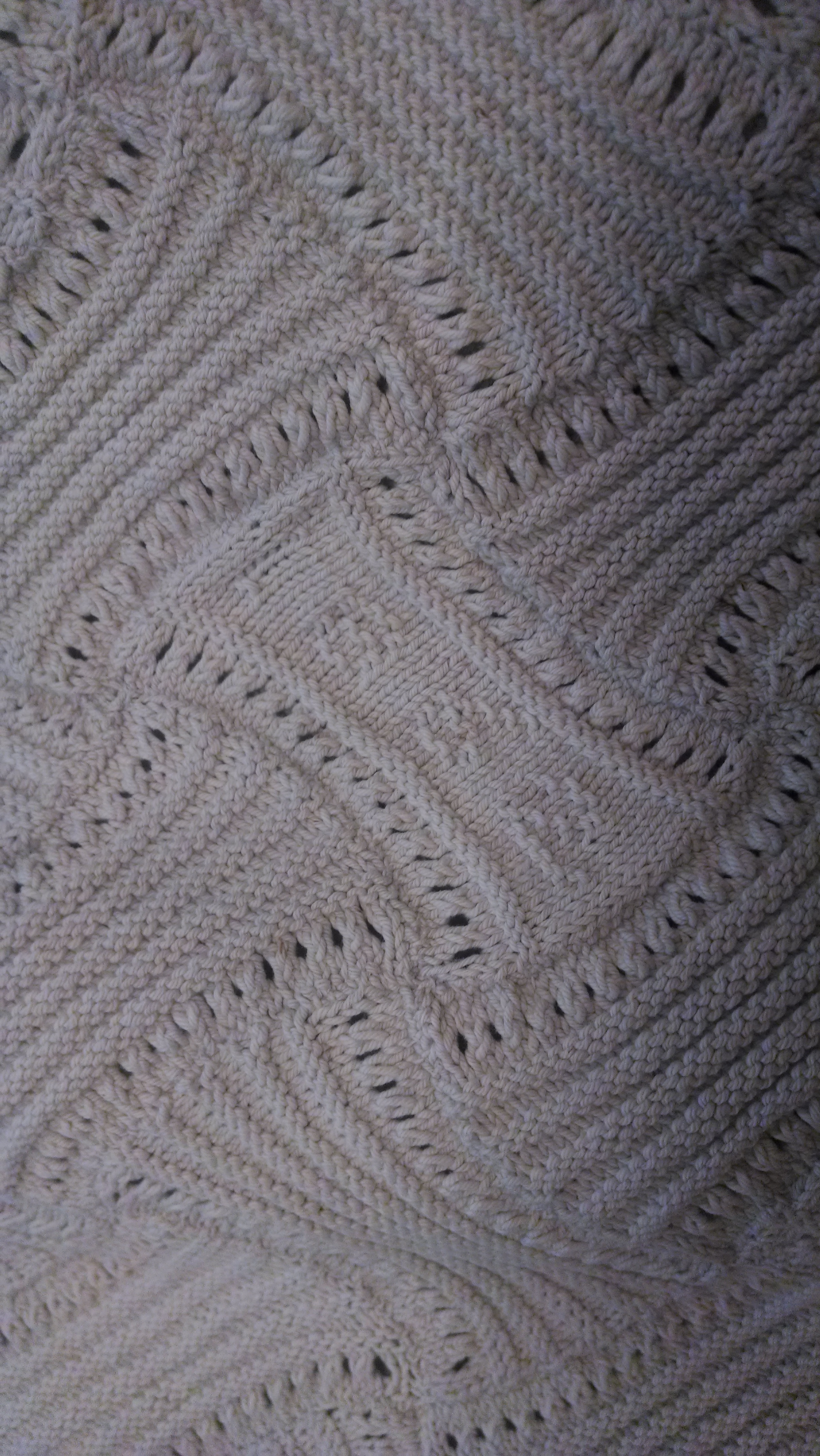
- Attributed to Harriet Maria Elmendorf (1816-1897)
- Cotton
- 1862
- Albany, NY
This knitted counterpane was worked in sections—in interlocking ribs and cable patterns—and then sewn together. It is believed to be the creation of Cherry Hill's prolific knitter, Harriet Maria Elmendorf. The date 1862 is knitted into the center of the coverlet.
This coverlet can be seen in an 1882 photograph of Cherry Hill's master bedroom.
Whitework Patterns



- Harriet Maria Elmendorf (1816-1897)
- Pencil and ink on paper with pins and thread
- C. 1850
- Albany, NY
The Cherry Hill collection includes considerable “whitework”—or white-on-white embroidery. These patterns match the designs found on a pair of unfinished whitework quilts in the collection. Each quilt includes its maker's name and the date within its worked designs—“H.M. Elmendorf” and “H.M Van Rensselaer.” Miss Van Rensselaer's quilt was begun in 1854—the year of her marriage to Alonzo Putman. Harriet Maria Elmendorf (1816-1897) and Harriet Maria Van Rensselaer Putman (1825-1860) were close cousins. So close that, when ailing, it was Harriet Putman's dying with that her daughter, Catherine, be raised by her cousin, Mrs. Elmendorf, at Cherry Hill. The two coverlets can be seen as visual quotations of one another solidifying the bonds of two close kinswomen.
“HME” appears in the corner of one of the patterns. Several of the patterns are pieced together using pins or thread.
Photographs



- Albumen prints
- 1882
- Albany, NY
The Elmendorfs commissioned a series of photographs of their home shortly before Cherry Hill was auctioned.
The exterior photograph includes several Cherry Hill household members. Harriet Maria Elmendorf is seated on the porch holding a parasol, flanked by her daughter, Harriet Maria Elmendorf Gould (on the right), and her cousin and ward, Catherine Bogart Putman (on the left). Servant Minnie Knapp can be seen at the top of the lower stairs, next to an urn. Harriet Elmendorf Gould's husband, John, is seated partway down the lower steps with his son's nurse and baby carriage. Servant Mary Burle is seated to their left.
Harriet Elmendorf Gould's sewing table can be seen in the photograph of the formal parlor.
The bedroom in the photograph belonged to Harriet and John Gould. Their son's toys can be seen in the floor. The coverlet on the bed is believed to have been knitted by Harriet Maria Elmendorf.
Apothecary Chest
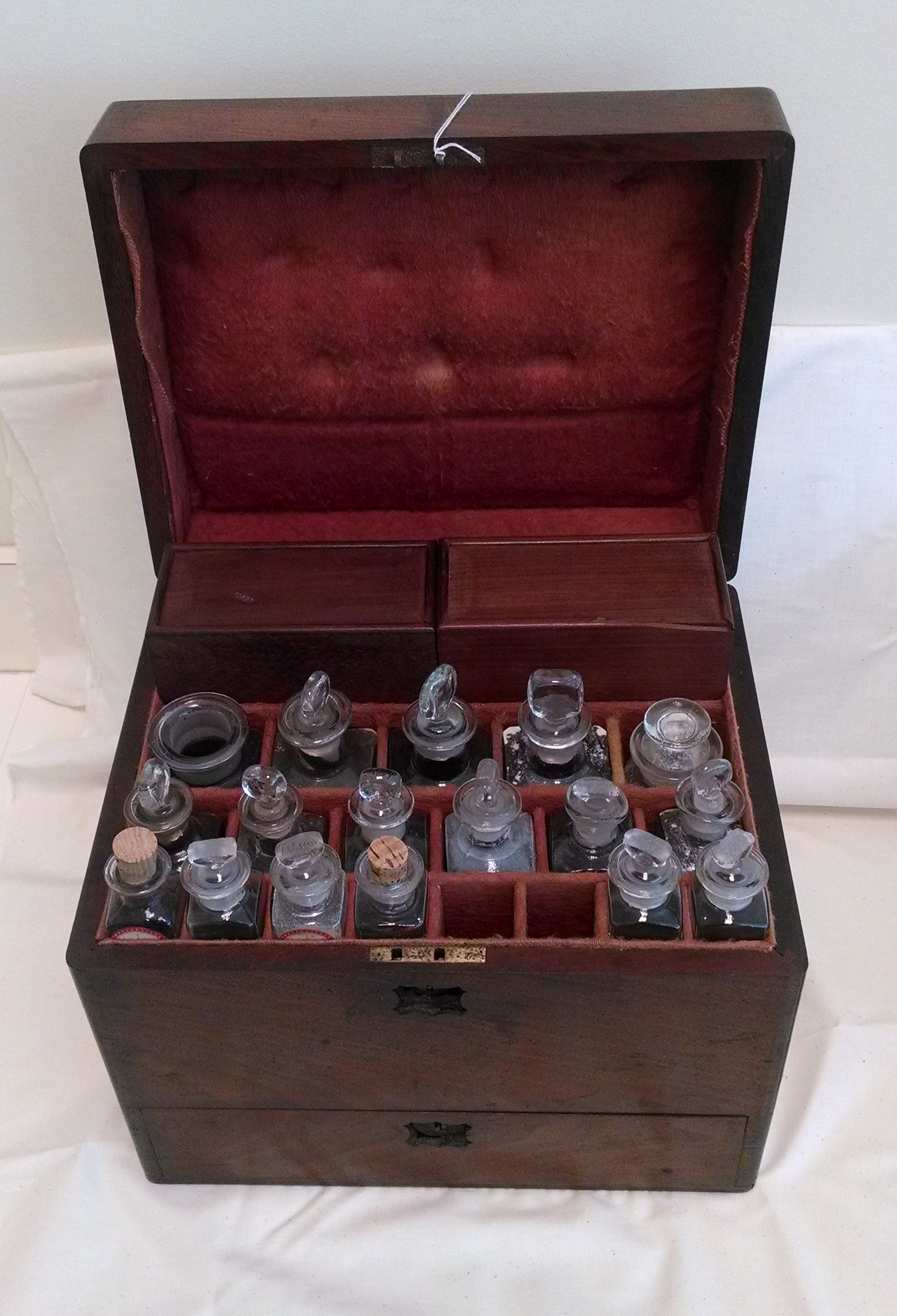
- Mahogany and felt with glass bottles
- c. 1840
Dr. Peter Elmendorf probably owned this apothecary chest. The chest contains bottles, pestles, hand-etched glass graduated cylinders, drug labels, an alcohol burner, and a mixing dish. The Historic Cherry Hill collection also includes some of Dr. Elmendorf's medical textbooks and lecture tickets from his medical schooling.
Wedding dress
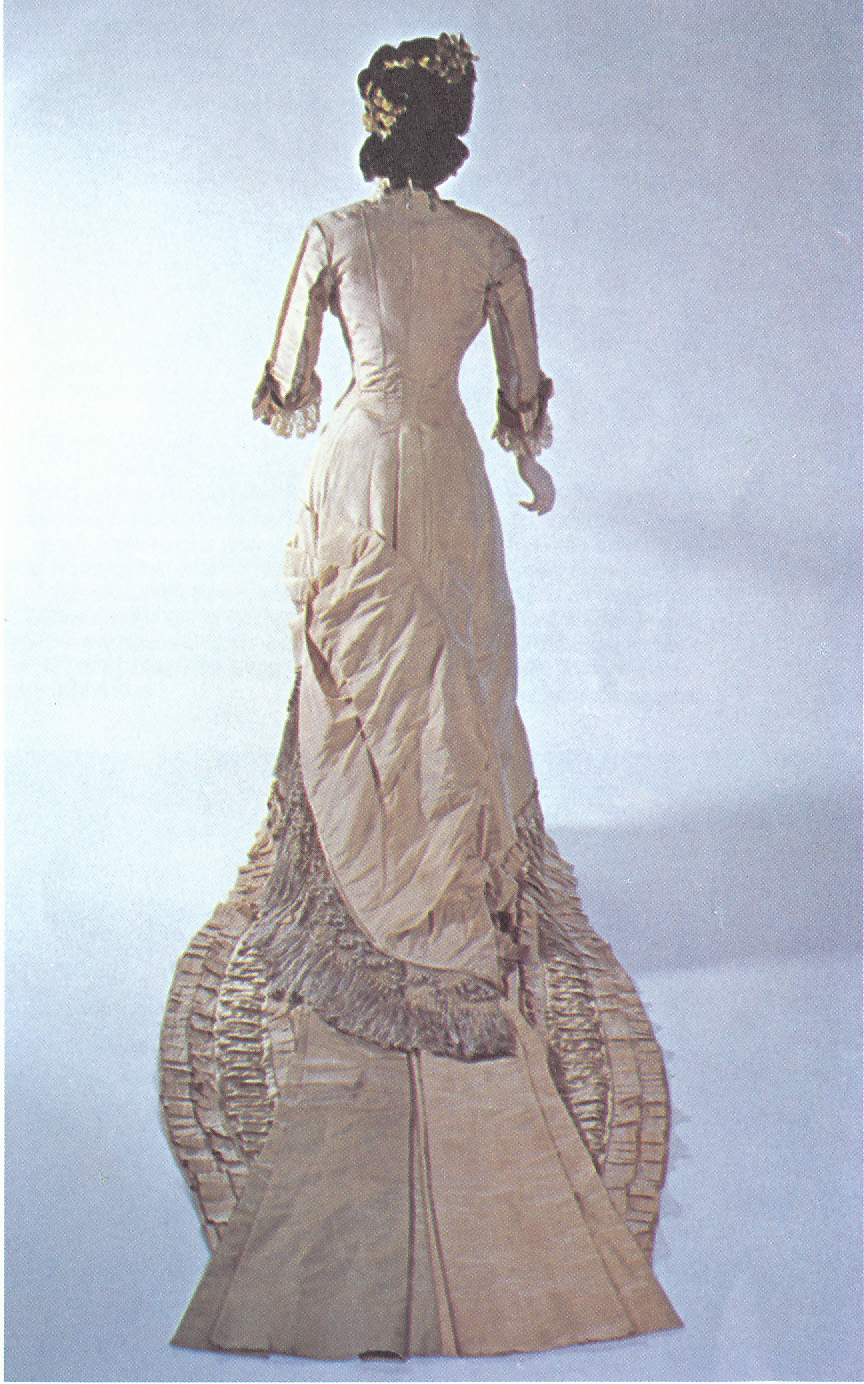
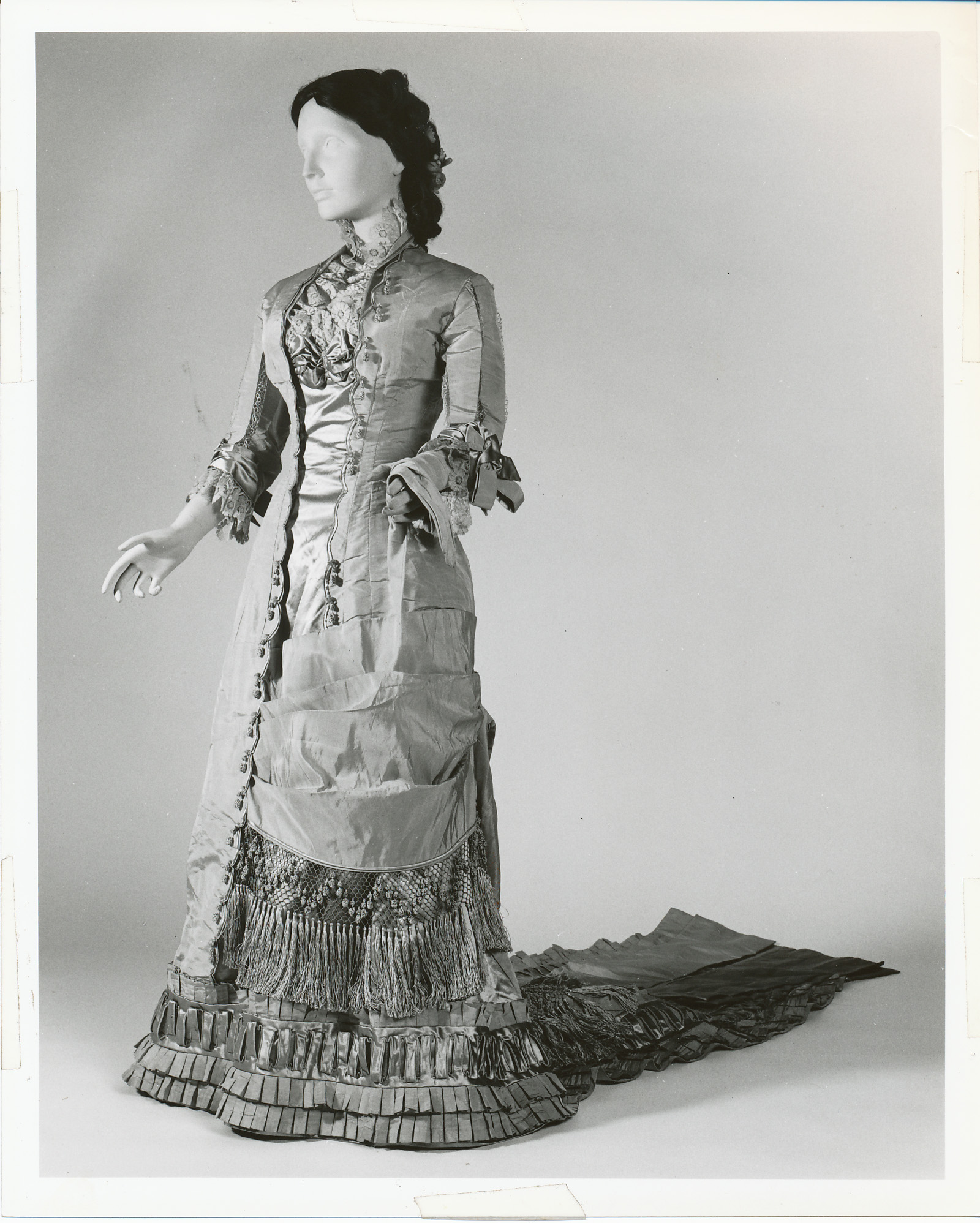
- Silk lined with linen and buckram
- 1878
- Albany, NY
The wedding of Harriet Maria Elmendorf to Dr. John Woodworth Gould (1839-1911), hosted at the Van Rensselaer ancestral estate, solidified the Cherry Hill family's place as one of the city's elite founding families. An article in the Daily Press and Knickerbocker, published on June 6, 1878, lauded the affair:
"The Cherry Hill mansion . . . is one of the old landmarks of Albany . . . The furniture is massive and antique, appropriate to the venerable character of the building and its associations. The clock that stands upon the landing of the staircase, and has been ticking time for more than a hundred years, is typical of the entire surroundings.
We have spoken somewhat in detail of this ancient edifice for the reason that it was yesterday the scene of A WEDDING more brilliant, probably, than any of the many hymeneal events that have taken place beneath its hospitable roo[f]. The descendants of Gen. Philip Van Rensselaer have been its occupants, without interruption, from the day of its completion up to the present time; and yesterday morning a great granddaughter, Miss Hattie Van Rensselaer, only daughter of Dr. Peter E. Elmendorf, was married to Mr. John W. Gould, of this city, a grandson of Judge Woodruff."
According to the article, 500 guests representing “the elite of Albany” attended, many of them from “the oldest families of Albany.” Accounts in the Cherry Hill collection complete the picture of the affair—from the menu to the orchestra to the making of Hattie's wedding dress.
Accounts and letters between Hattie and her cousin, Catherine Bogart Putman, reveal that while the gown was made in Albany by dressmaker Madame Keenan, Hattie herself sourced choice fabrics and trim from New York City. This arrangement probably saved Hattie some money while still allowing her to sport a gown that was a work of art worthy to be the talk of the town.
Photographs



- Albany, NY
- Ambrotype of Harriet Maria Van Rensselaer Elmendorf c. 1870.
- Tintype of Dr. Peter Elmendorf with his daughter, Harriet Maria (“Hattie”) Elmendorf (later Gould), c. 1870.
- Tintype of Catherine Bogart Putman (later Rankin) c. 1872
Photographs
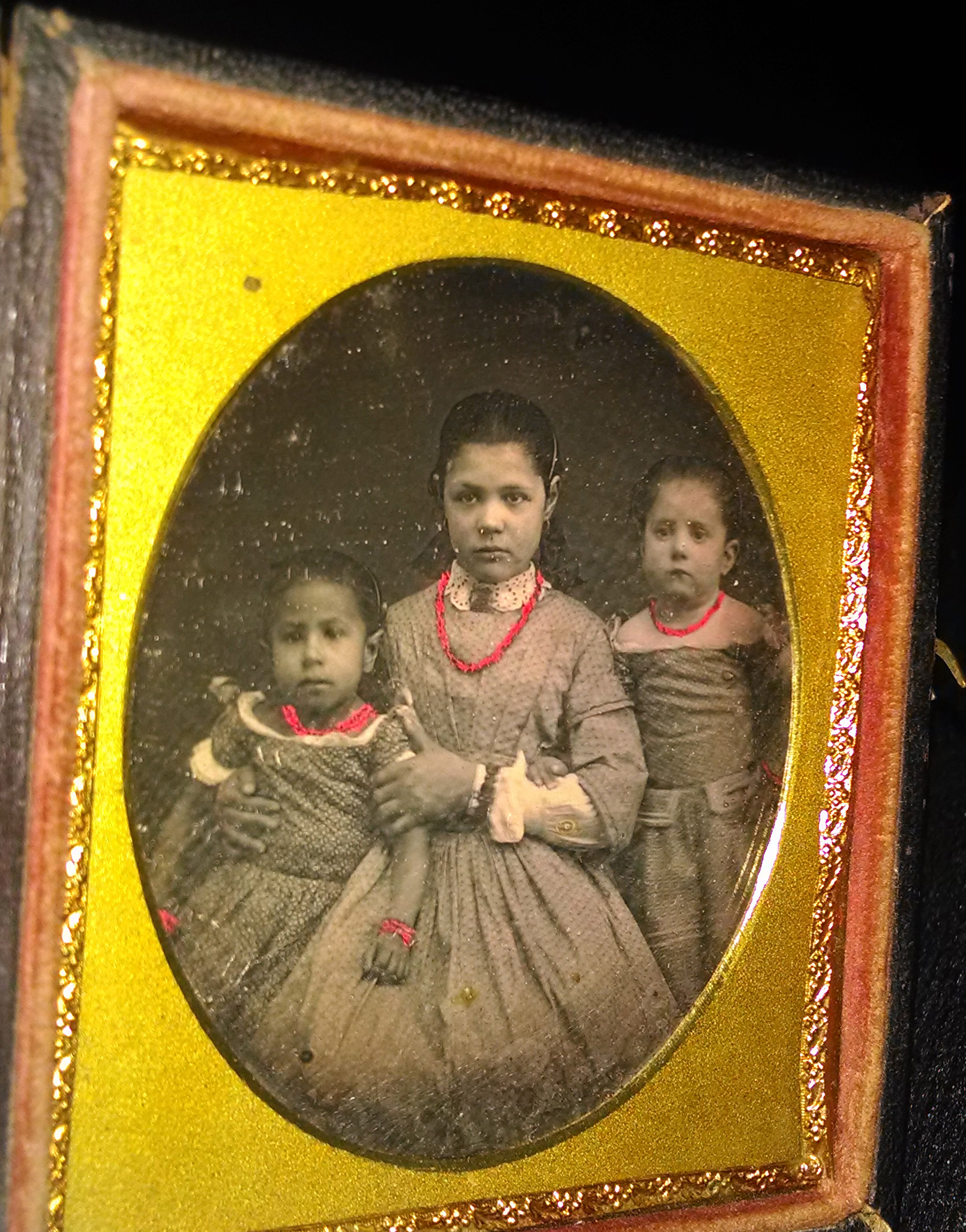
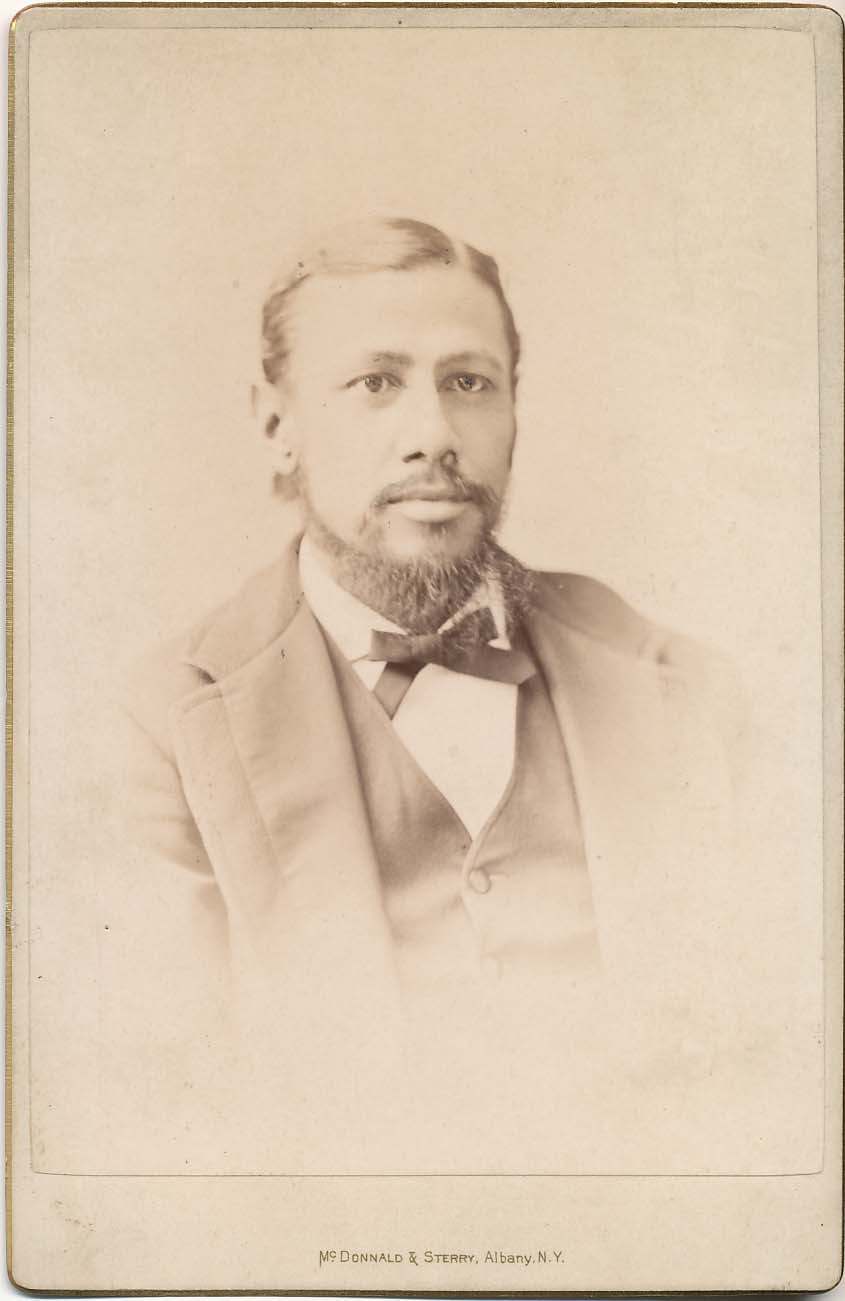
- Daguerreotype of Minnie Knapp (left), Jane Amelia Knapp (middle), and Margaret Carrol (right), c. 1855. Jane and Minnie were siblings raised as servants of the extended Van Rensselaer family. Margaret was the daughter of another family servant.
- Cabinet Card of Jimmy Knapp, c. 1870
Dolls

- Papier mache, wood, kidskin, cloth
- c. 1835
- Germany
This set of dolls is thought to have belonged to household servant Minnie Knapp.
Sheet Music
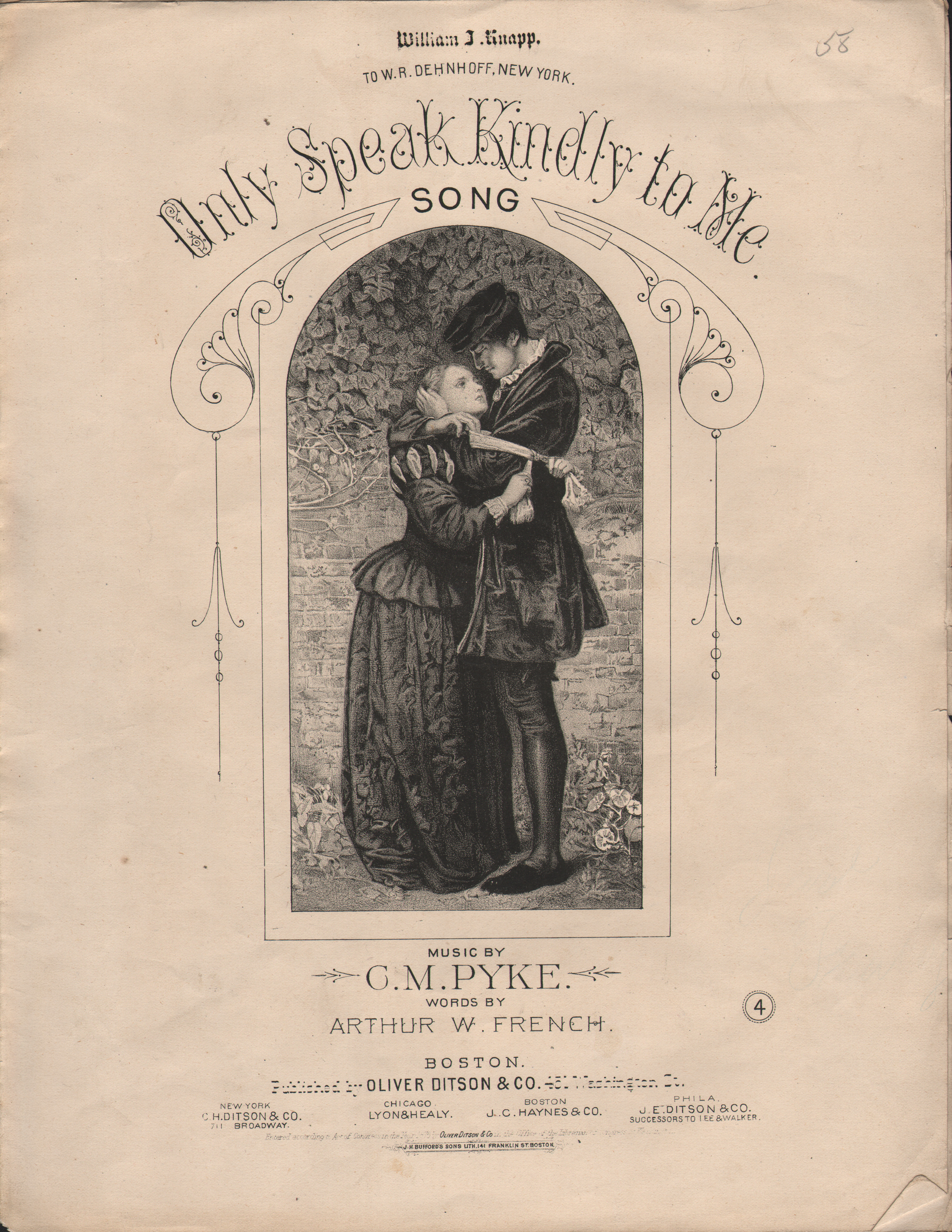
- c. 1876
- Oliver Ditson & Co.
- Boston, MA
Jimmy Knapp may have served as a butler for the Van Rensselaer family—but his papers and belongings reveal a man of varied skills and interests. The Historic Cherry Hill collection includes Jimmy's violin and hundreds of pages of his sheet music. Piano tuning was among the odd jobs that Jimmy took on after the death of his guardian-employer, Richard Van Rensselaer, and Jimmy often joined Hattie and the Elmendorfs in their music room.